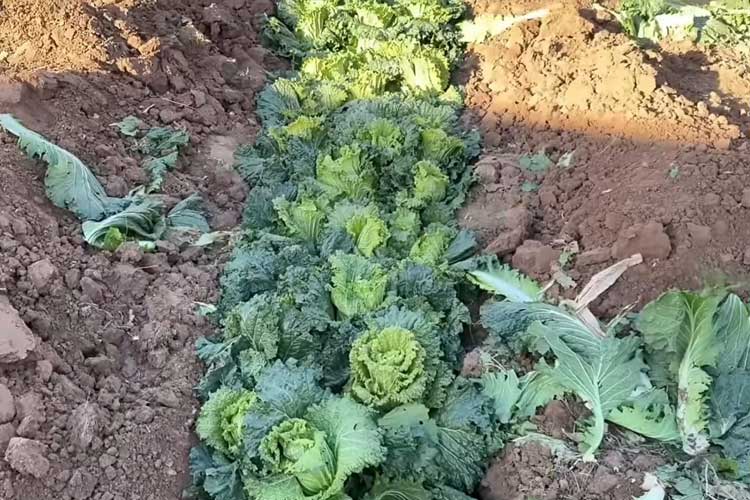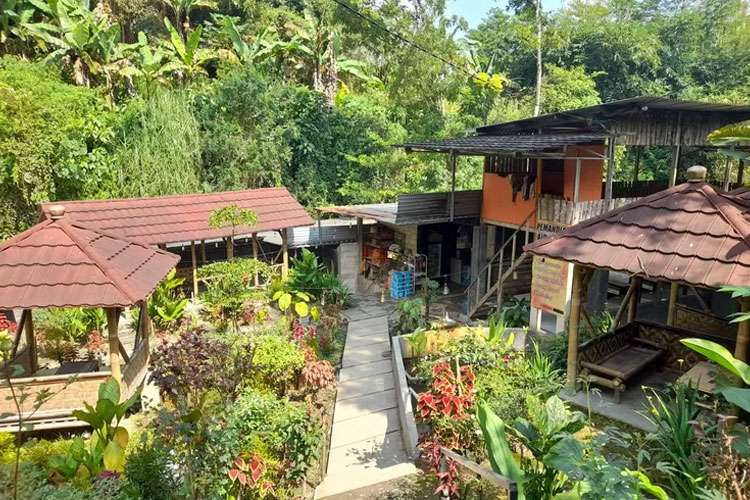TIMES BAJAWA, JAKARTA – The art of food preservation has been an integral part of culinary traditions worldwide. Across different cultures, ingenious methods have emerged to ensure the longevity of seasonal produce and culinary delights. Let's take a culinary journey around the globe to explore some traditional food preservation techniques.
1. Kangina in Egypt: Utilizing Wet Clay
 Kangina, a food preservation techniques from Middle East. (Photo: Outpost/Screenshot)
Kangina, a food preservation techniques from Middle East. (Photo: Outpost/Screenshot)
Kangina is a renowned preservation process in the Middle East, notably found in Egypt, Afghanistan, and neighboring countries. This method is commonly employed for preserving fruits, especially grapes.
The process begins by wrapping food or fruits in layers of wet clay before allowing them to dry under the sun. The drying process is believed to create an additional protective layer, extending the shelf life of the food for up to six months.
Kangina stands as a reliable method for keeping food fresh in arid environmental conditions. "The texture will be abit mushy yetstill has its original sweetness," Mehmed an Afganishtan citizen said in Outpost.
2. China: Burying Vegetables in the Ground for Winter
In various regions of China, the tradition of burying vegetables in the ground proves to be an effective way to prevent damage during the winter season. Farmers dig holes in their gardens to store vegetables, covering them with straw and plastic before burying them in the soil.
This method allows the vegetables to remain preserved, benefiting from the stable temperature and sufficient humidity of the soil. This age-old practice enables farmers to sell vegetables harvested during the winter months, as the vegetables can last up to three months.
3. Kimchi in Korea
Korea is renowned for its iconic dish, kimchi, a staple served with every meal. Transforming vegetables into kimchi involves a fermentation process using a mixture of chili, garlic, vinegar, and other ingredients.
Some families even add fish oil, giving the kimchi a flavor reminiscent of shrimp paste. The fermentation process imparts a unique taste to the dish, serving as a natural preservation method that allows kimchi to last for several months when stored properly.
4. Cold Smoking in Scandinavia
In Scandinavia, nations have employed the technique of cold smoking to preserve meat and fish. This process involves suspending food over the residual smoke from cooking fires.
The method imparts a distinct smoky flavor and protects the food from bacteria and microbes that could spoil it. The process can last for days, sometimes even weeks.
The smoked meat or fish from Scandinavia can endure for months, a stark contrast to locally smoked items that may only last a few days.
5. India: Preserving Fruit in Sugar (Murabba)
In India, an ancient practice involves creating Murabba, a concoction of fruits preserved in a sugar solution. The process includes heating fruits with sugar and spices, producing a sweet mixture that is not only delicious but also has a long shelf life.
Murabba stands as a testament to India's culinary heritage, showcasing how simple yet effective methods can transform seasonal fruits into enduring delights.
In a rapidly changing world, where modern conveniences often overshadow traditional practices, these time-honored preservation methods stand as a reminder of the importance of preserving cultural heritage and sustainable living.
They highlight the wisdom embedded in culinary traditions, encouraging us to appreciate the simplicity and effectiveness of these techniques that have withstood the test of time.
As we savor the flavors of preserved delicacies, we also savor the richness of human ingenuity and resilience passed down through generations—a legacy worth celebrating and preserving for generations to come. These food preservation techniques will remain an outstanding method to keep your food in such a good way.
| Pewarta | : Khodijah Siti |
| Editor | : Khodijah Siti |

























